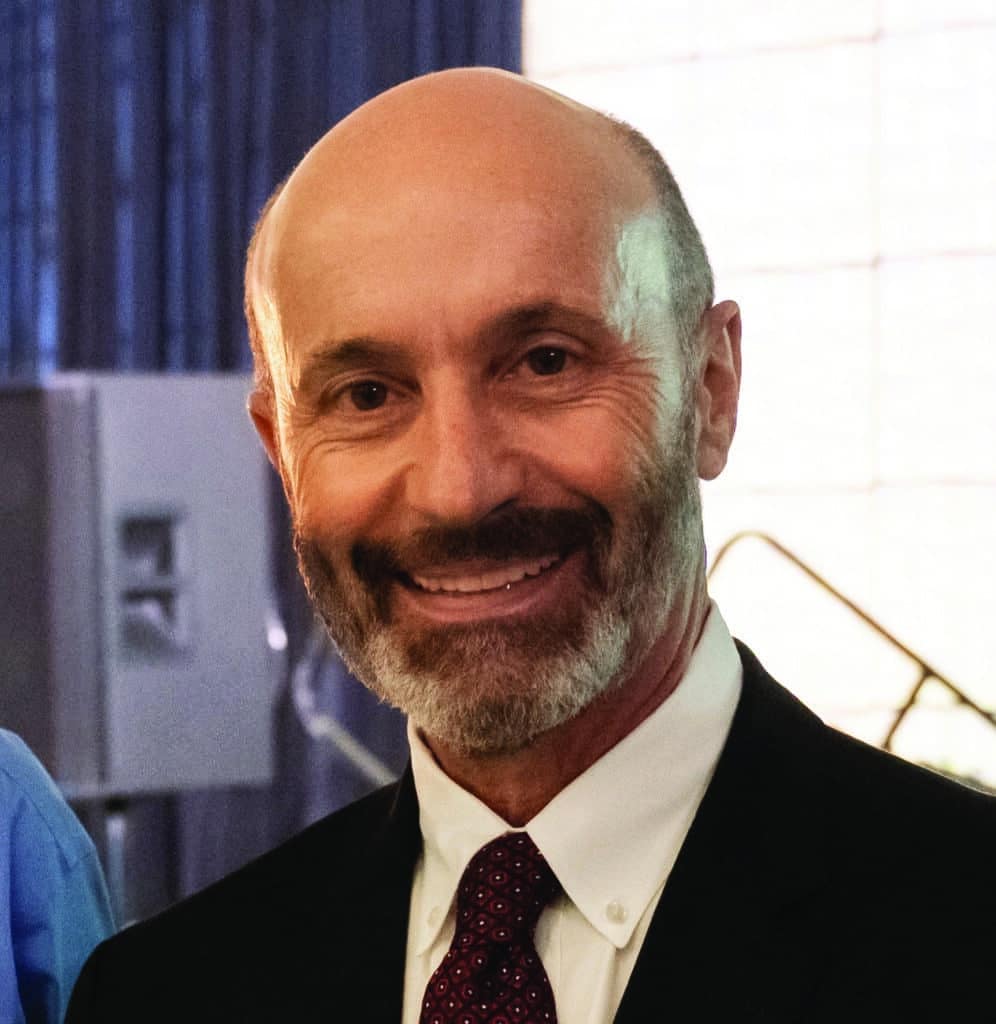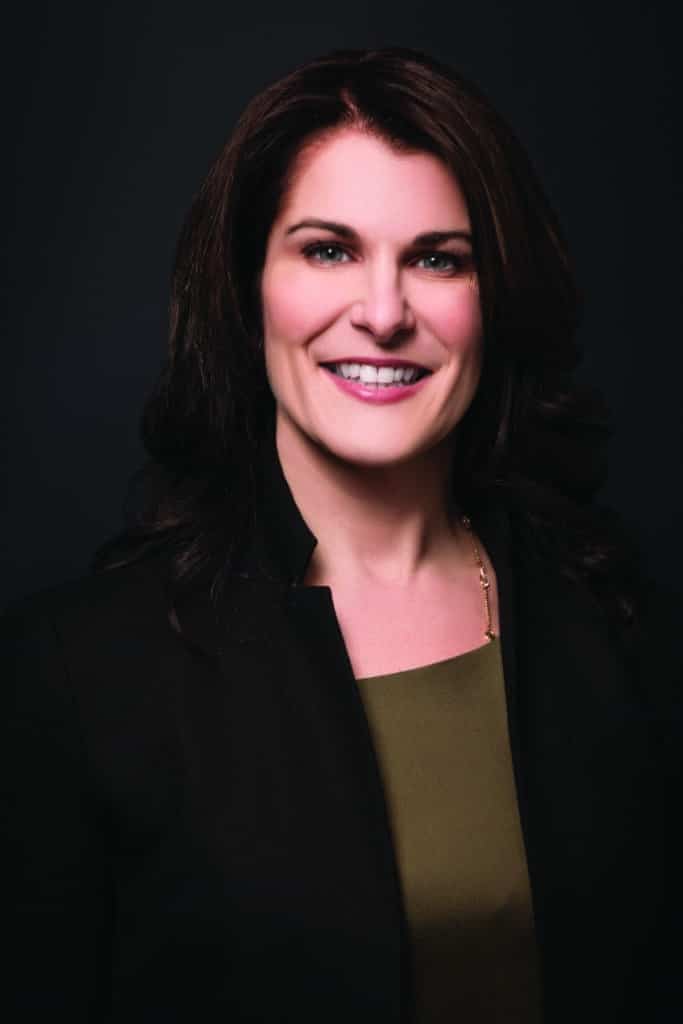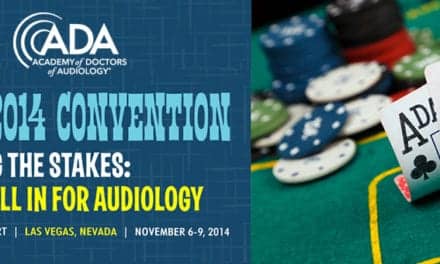We need to pay attention to the denial and shame associated with hearing loss.
Inside the Research | March 2023 Hearing Review
By Douglas L Beck, AuD

Douglas Beck: Hi Nashlea! It was wonderful meeting you in Ontario, Canada, in the autumn of 2022.
Nashlea Brogan: Thanks, Doug! It was great to meet you, too; I enjoyed your lectures!
Beck: Thank you. So let’s kick this off by addressing your audiology education. I know you went to Western Ontario for your master’s.
Brogan: Right. I graduated from Western Ontario in 2003 with my master’s and then went to Salus University for my AuD and graduated with my doctorate in 2009.
Beck: And you opened a private practice pretty early in your career?

Brogan: I did. I opened my private practice, Bluewater Hearing, in Sarnia, Ontario, in 2004, right after receiving my master’s.
Beck: Wow. That was gutsy! Having a doctorate in audiology takes remarkable skill, perseverance, and dedication, but it took even more in your situation. That is, you have personally experienced hearing loss to hearing aids to binaural cochlear implants. All while running a private practice as a doctor of audiology. Tell me more about your journey?
Brogan: Well, OK, but it’s a long story! I was very involved in dance and music when I was a child. We traveled across the Canadian provinces, competing, performing, and learning…it was wonderful. However, when I was fourteen, I was having difficulty hearing, so my mom took me to a local audiologist. The audiologist told us I had progressive sensorineural hearing loss and would eventually need cochlear implants, and that was it. Then I saw an ENT who said I had destroyed my hearing while listening to noise and using headphones. However, looking back on all that now, my hearing thresholds were within the normal range to about 3000 Hz. I was young and didn’t have any significant noise exposure, which perhaps might have accounted for such a degree of hearing loss. But again, I did not have noise exposure!
Beck: Did anyone ask about your family history or a genetic tendency, or familial sensorineural hearing loss?
Brogan: No, they didn’t.
Beck: Sounds like you needed some more thorough answers and a better explanation!
Brogan: Absolutely! By the time I was 18 years old I had sought the counsel of another audiologist, who eventually became my mentor and one of my best friends. The year I graduated from high school my hearing loss had progressed. At graduation I was normal to 1000 Hz and had 110 dB thresholds above that. In 1994, I was fitted with two hearing aids and had the good fortune to go to France to study for a year. While in France, I noticed that when some people saw my hearing aids, they would try to sign to me, which was, frankly, awkward. They were rather abrupt and assumed I could not hear or speak, both of which I do! It was very different from the societal norms related to hearing aids in Canada, but an eye-opening experience nonetheless!
Beck: And after a year abroad, you came back to Canada?
Brogan: Yes, I started studying at the university. I fell in love with psychology and I started reading a lot of audiology and aural rehabilitation and psychology articles and chapters by one of your friends, Mark Ross. My mentor told me, “Mark Ross is what you want to be.” She was right.
Beck: Mark was a dear friend and a wonderful person. I always enjoyed spending time with him. He significantly influenced the entire profession from aural rehabilitation to pediatrics to amplification and counseling and more. As I’m sure you know, Mark had significant hearing loss as a young man during WWII. He wore body aids, hearing aids, and, eventually, a cochlear implant. Okay, so back to you! You were an early adapter to digital hearing aids; was it 1995 or so?
Brogan: Yes. I received digital BTE hearing aids when they first became available in Canada, but soon, I switched to very small digital CIC aids! They were great regarding the programmability and sound quality. However, the power I needed was beyond what they could deliver 25+ years ago.
Beck: For some, it may seem unusual to fit canal aids on a person with such significant hearing loss. However, as you had hearing (at that time) to about 1000 or 2000 Hz, and as your thresholds beyond 2000 Hz were 110 dB+, the “island” of hearing you had was able to benefit from amplifying the sounds below 2000 Hz. Further, with 110 dB+ thresholds, it was highly unlikely you would have received any significant gain from any hearing aid, and if you had, you would probably have spent quite a bit of time-fighting acoustic feedback.
Brogan: That was exactly the rationale we engaged, and it worked fine – for a while! When I arrived at graduate school for audiology (Western Ontario) people could not believe I was wearing CICs for my degree of hearing loss and getting along so well! However, my hearing was slowly deteriorating over the years and I knew I would need another strategy. Although I thoroughly appreciated and benefited from having hearing aids, I knew that was not going to work for me over the long term.
Beck: And to be experiencing significant hearing loss while studying hearing loss must have been disconcerting.
Brogan: Yes, I knew what was going on with me and where it was going. It was difficult at times. Then again, and at other times, it was remarkably comforting to realize many people had been through this before me. I knew I would make the best of it, too. But I recall there were things I experienced as a patient that we didn’t talk much about as professionals.
Beck: For example?
Brogan: One of the most important revelations for me was that regardless of my success with hearing aids or cochlear implants, when I go to bed at night, I am, once again, deaf. I don’t think audiologists, ENTs, or dispensers really address this issue very much, and it needs to be explored, discussed, and managed. Further, without my hearing aids (back then) or my cochlear implants now, when I take off the hardware, I am once again deaf. If there was a fire alarm, a phone call, a text, if my dog barks, or if there is a break-in, I wouldn’t hear it. As professionals, we need to discuss these issues with our patients to better prepare them to effectively manage these and similar situations, all of which fall under counseling and aural rehabilitation.
Beck: Excellent points. I agree entirely. I remember my implant patients from 40 years ago making the same observations. I know one CI patient who used to wear her cochlear implant (40 years ago!) while sleeping for the same concerns. Although none of us recommended sleeping with her CIs in place, we totally understood her choice. If you don’t mind, tell me about your cochlear implant experience.
Brogan: I received my first cochlear implant in the summer of 2012 and my second implant in 2013. I had been practicing audiology for eight years, and over time, I was becoming more and more frustrated with hearing aids. I was also very aware that my speech was changing and becoming more “slurred.” I had young children then, and I had to rely on alerting systems to know when they were crying. Gradually, over time, I developed the courage to apply to the cochlear implant program. At that time, I didn’t believe cochlear implants would work. I remember the cochlear implant audiologist tried desperately to realistically improve my expectations. I feared the surgery and, of course, the possibility of facial paralysis. It was not an easy decision. However, in retrospect, having children really encouraged me to have the surgery.
Thankfully my fears were ill-founded! My implants are a miracle! They work very well! The surgeries were quick and I was home the same day. I went back to work in the clinic one week later! I do recall that my first activation was scary. At first, my audiologist and my husband sounded like they were talking on helium, but that only lasted an hour! We went to a restaurant a few hours later and I could hear the music playing in the background and the waitress’s voice. Everyday speech and environmental sounds returned to normal within a few hours and reminded me of how things sounded in my childhood.
My best memory right after getting my first cochlear implant was hearing my 3-year-old daughter’s and my 6-year-old son’s voice for the first time! In my opinion, CIs sound nothing like hearing aids. Many hearing aids amplify sounds more-or-less equally and it sounds blurry! An FM system will better be able to separate speech from background sound, but you might feel like you’re hearing in a tunnel! From my viewpoint, cochlear implants allow the separation of each unique sound. I can hear a voice over the wind, or when driving in the car, I can hear all the sounds; the tires on the road, the radio, the vibration, the engine, and even braking. None of these sounds were apparent to me with hearing aids. Even musical instruments and my mom’s voice remind me of the sounds I heard as a child. It was like going back in time, in a good way! To be clear, what we’re talking about are my own personal experiences, and each person who receives a cochlear implant has their own unique experience.
Beck: What has been the best and worst part of wearing a cochlear implant?
Brogan: The best part has been hearing nearly normally like I did before I lost my hearing. The worst part is taking them off every day and being deaf, going from normal hearing to completely deaf every day of my life.
Beck: Are there other observations you’ve made as an audiologist regarding professional practice areas which need improvement?
Brogan: Well, yes! As you know, Doug, I studied psychology in addition to communication sciences and disorders. We often change patients’ lives for the better, and we do it intentionally and with good reason. However, we often don’t really prepare them (or their family) for these same changes or the interesting and improved consequences of our interventions. I believe we need to pay attention to the denial, shame, and guilt associated with hearing loss, as well as expectations and exceptions. Each person is unique and each has their own psychological traits. In audiology, and many other professions, we often find what we assumed, and we often don’t dig deeper. In general, we don’t explore alternative hypotheses or etiologies. This is a real problem because our typical patients are older and often have multiple issues which should be diagnosed and addressed. If we don’t dig deeper into their communication problems, no one else will.
In your lecture in Ontario, you talked about how 20-22 percent of people over the age of 65 years have mild cognitive impairment and how MCI and hearing loss can parade and masquerade as each other. Yet most hearing care professionals are not looking for MCI; they aren’t screening, and they don’t recognize MCI or refer for the same. They find the solution that makes sense to them (SNHL) and that’s the end of the diagnostic inquiry. Further, even when we fit patients with hearing aids, it’s not just about the device. These are human beings, and when you change their sensory systems, there’s a domino effect that changes their lives – and we really should prepare them! When you think about physicians, if you go to a physician with unilateral hearing loss or unilateral tinnitus, he or she doesn’t just look in your ear canal and review the hearing test. They dig deep, as they should! They order an MRI, a complete blood panel, and more to be sure they are not missing anything. Why is it that hearing care professionals don’t approach the patient in the same way?
Beck: I agree entirely. In the USA, I’m sorry to say; I think it boils down to money, CPT codes, reimbursement, and very profitable insurance companies. Audiologists are in a difficult spot as we most often bill and get paid shockingly tiny little sums for very few and limited CPT-code-based diagnostic tests. Of course, we have better access now in 2023, but still, the patients would be shocked to see how little the reimbursements are. Further, just like every other professional, we cannot afford to perform and interpret tests or do professional work for free. Even aural rehabilitation (AR) does not have a reimbursed CPT code for audiologists via Medicare, so what gets done is often quick, minimal, and seems to me, a bare-bones approach. Oddly, and for reasons which are decades old, Speech Language Pathologists can bill Midicare for AR, but to be honest, and I mean no disrespect to my SLP colleagues, their area of expertise does not typically include modern highly technically oriented hearing aids, digital remote mics, FM systems, pairing amplification systems with a vast array of smartphones, cochlear implants and much more.
I agree with you. AR is highly pragmatic, tremendously beneficial, and generally underused or not done at all. Audiology-based AR is a “big miss” in the real world. And unfortunately, these same issues apply across all areas of audiology, including tinnitus patients and vestibular patients.
Brogan: Absolutely. I’ve had tinnitus patients who expressed suicidal ideations. Clearly, these are very dangerous, perhaps life-threatening situations that require immediate and competent management. Many audiologists recognize suicidal ideations; they will know the patient is in crisis and the audiologist will act on their professional responsibility to make immediate and emergent decisions. However, and very importantly, even in these significant encounters, we cannot bill for the level of care or time involved in making sure the patient is seen immediately and managed appropriately by other professionals. Physicians have evaluation and management (E&M) codes which allow them to spend appropriate time when needed to take better care of the patient, and even in 2023, that’s missing in audiology. It’s almost like the rules and regulations force us to take minimal care of patients!
Beck: Thanks for sharing your thoughts on that. I recall Zitelli & Palmer wrote a very interesting article about audiology and the importance of recognizing suicide risks. Their article was in Seminars in Hearing in 2018. I recommend it. Anything else we’re missing?
Brogan: Doug, you lecture extensively and have written extensively about Speech-in-Noise (SIN) tests. I have no idea why only about 20% of audiologists perform a SIN test, but this is another huge miss.
Beck: AAA, ASHA, and IHS each include SIN as part of their Best Practice recommendations. SIN tests take about 2-10 minutes, and many require no additional equipment, not even a sound booth. SIN difficulty is the primary reason people seek the counsel of hearing care professionals. If I could only have one measure of a patient’s audiological ability, the single most important measure would be their SNR-50 (the signal-to-noise ratio required for the patient to repeat half the words correctly). In fact, their SNR-50 often tells me exactly which (if any) technology they need!
Brogan: Yes, and the same is true for peole wearing hearing aids and cochlear implants; their SNR-50 tells us how they are doing in the real world while wearing their technology as programmed by the audiologist. There is no substitute for this pragmatic, quick, simple, functional test.
Beck: Preaching to the choir! Nashlea, you are an exceptionally insightful and talented audiologist, and I am proud of you. You certainly have faced multiple challenges and impediments to your education and chosen profession. Yet, you have prevailed brilliantly and you are an outspoken advocate for your patients and your profession! It’s been a joy chatting with you.
Brogan: Thank you, Doug. I’ve enjoyed our time together, too.




